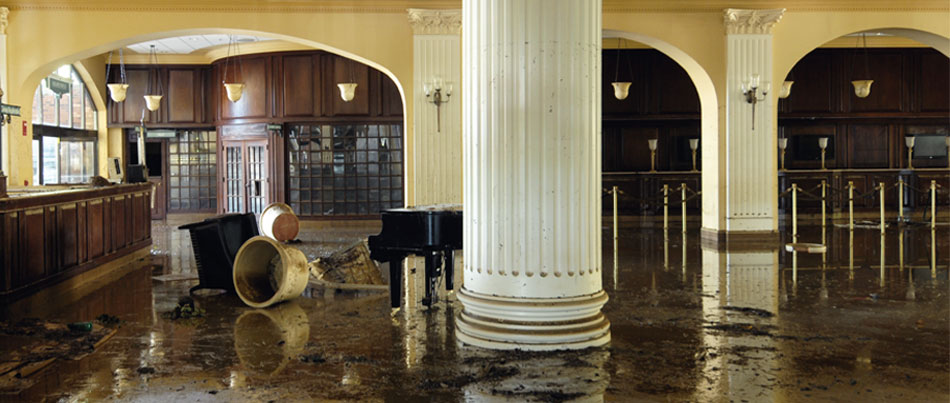6 Water Damage Reconstruction Do's and also Don'ts.
6 Water Damage Reconstruction Do's and also Don'ts.
Blog Article
What are your ideas on Safety Tips To Prevent Fire And Water Damage?

Though water provides life, water intrusion on components where it's not expected to be can result in damages. If the water saturates right into your structure, it can peel off away surface areas and wear down the foundation. Mold and mold likewise flourish in a moist setting, which can be harmful for your wellness. Houses with water damage smell old and musty.
Water can originate from lots of sources such as tropical storms, floodings, ruptured pipes, leaks, and drain issues. In case you experience water damages, it would certainly be good to understand some security precautions. Right here are a few guidelines on just how to handle water damages.
Do Prioritize Residence Insurance Protection
Water damages from flooding dues to heavy winds is seasonal. Nonetheless, you can additionally experience an abrupt flood when a malfunctioning pipeline unexpectedly bursts right into your house. It would certainly be best to have house insurance coverage that covers both acts of God such as natural calamities, and also emergencies like busted plumbing.
Don't Forget to Shut Off Utilities
This reduces off power to your whole home, protecting against electrical shocks when water comes in as it is a conductor. Don't fail to remember to transform off the main water line shutoff.
Do Keep Proactive and Heed Weather Condition Signals
Storm floods can be extremely uncertain. If there is a history of flooding in your community, stay prepared as well as positive. If you live near a lake, river, or creek , pay attention to discharge cautions. Obtain valuables from the very beginning as well as basement, after that put them on the greatest feasible level. Doing so lowers potential home damage.
Do Not Overlook the Roof
Prior to the climate turns frightful, make sure you have a roof examination. It would certainly be sensible to get this solution every year as it can minimize complex problems. You can avoid rainfall damage if there are no openings and leaks in your roof covering. Your roofing contractor will also look after damaged rain gutters or any other indicators of weakening. This will certainly avoid water from flowing down your wall surfaces as well as soaking your ceiling.
Do Focus On Tiny Leakages
A burst pipe does not occur overnight. Normally, there are red flags that indicate you have weakened pipelines in your home. You might see bubbling paint, peeling wallpaper, water touches, water stains, or dripping noises behind the wall surfaces. Eventually, this pipe will break. Preferably, you must not wait for things to escalate. Have your plumbing fixed before it causes huge damage.
Do Not Panic in Case of a Burst Pipe
When it comes to water damage, timing is key. Hence, if a pipeline ruptureds in your house, promptly shut off your primary water valve to cut off the resource. Call a reputable water damage restoration professional for aid.
Water offers life, water breach on parts where it's not supposed to be can result in damages. Residences with water damage smell moldy and also old.
Water damages from flooding charges to hefty winds is seasonal. You might discover gurgling paint, peeling off wallpaper, water streaks, water stains, or dripping noises behind the walls. When it comes to water damage, timing is key.
Some Do's & Don't When Dealing with a Water Damage
DO:
Make sure the water source has been eliminated. Contact a plumber if needed. Turn off circuit breakers supplying electricity to wet areas and unplug any electronics that are on wet carpet or surfaces Remove small furniture items Remove as much excess water as possible by mopping or blotting; Use WHITE towels to blot wet carpeting Wipe water from wooden furniture after removing anything on it Remove and prop up wet upholstery cushions for even drying (check for any bleeding) Pin up curtains or furniture skirts if needed Place aluminum foil, saucers or wood blocks between furniture legs and wet carpet Turn on air conditioning for maximum drying in winter and open windows in the summer Open any drawers and cabinets affected for complete drying but do not force them open Remove any valuable art objects or paintings to a safe, dry place Open any suitcases or luggage that may have been affected to dry, preferably in sunlight Hang any fur or leather goods to dry at room temperature Punch small holes in sagging ceilings to relieve trapped water (don't forget to place pans beneath!); however, if the ceiling is sagging extremely low, stay out of the room and we'll take care of it DO NOT:
Leave wet fabrics in place; dry them as soon as possible Leave books, magazines or any other colored items on wet carpets or floor Use your household vacuum to remove water Use TV's or other electronics/appliances while standing on wet carpets or floors; especially not on wet concrete floors Turn on ceiling fixtures if the ceiling is wet Turn your heat up, unless instructed otherwise

As a person who reads on Ways to Reduce The Risk Of Fire And Water Damage, I imagined sharing that piece of content was worth the trouble. Do you know somebody who is occupied with Fire And Water Damage Prevention? Why not promote it. I truly appreciate reading our article about What You Can Do At Home To Prevent Fire And Water Damage.
Report this page